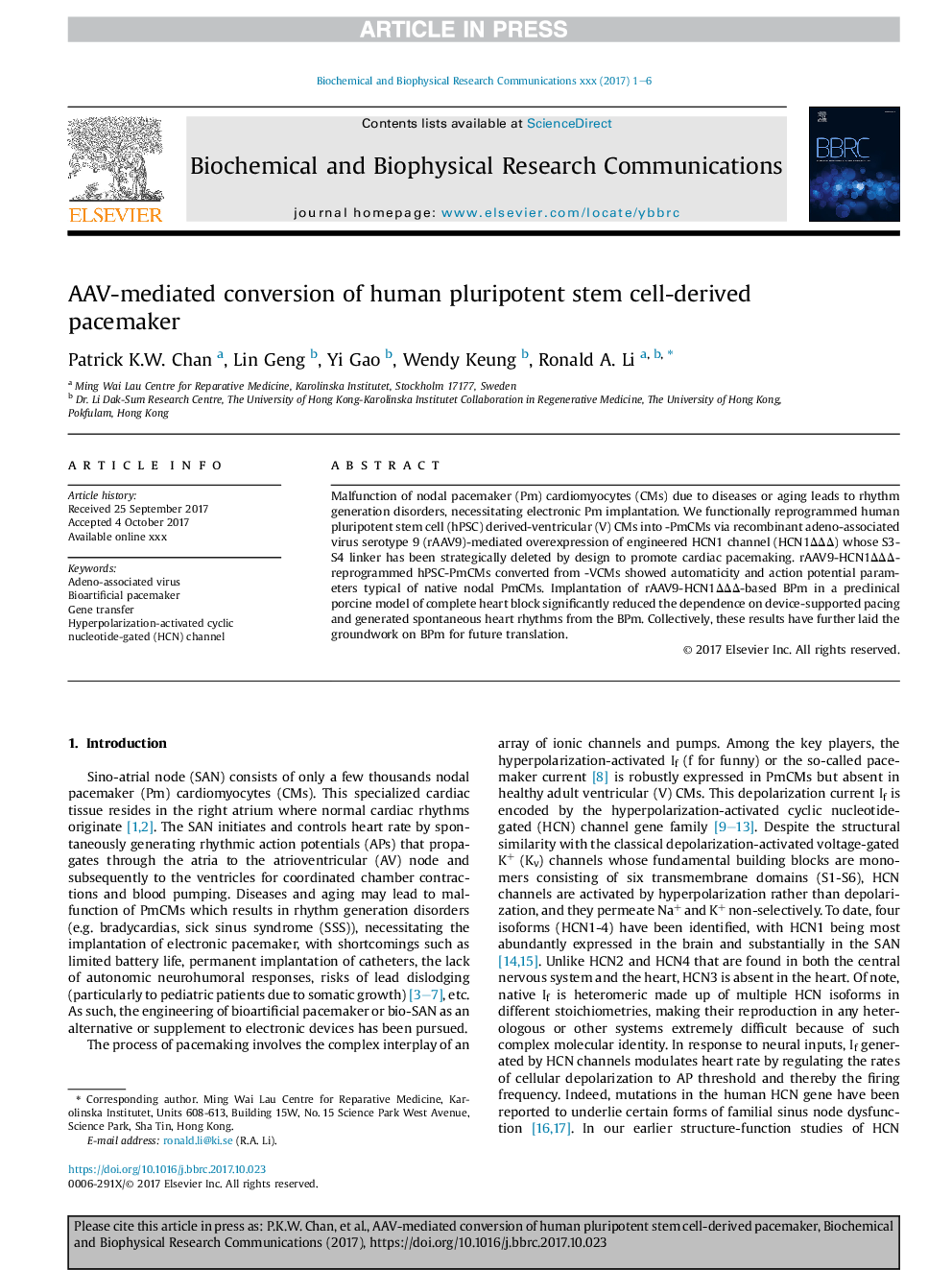| Article ID | Journal | Published Year | Pages | File Type |
|---|---|---|---|---|
| 8296101 | Biochemical and Biophysical Research Communications | 2017 | 6 Pages |
Abstract
Malfunction of nodal pacemaker (Pm) cardiomyocytes (CMs) due to diseases or aging leads to rhythm generation disorders, necessitating electronic Pm implantation. We functionally reprogrammed human pluripotent stem cell (hPSC) derived-ventricular (V) CMs into -PmCMs via recombinant adeno-associated virus serotype 9 (rAAV9)-mediated overexpression of engineered HCN1 channel (HCN1ÎÎÎ) whose S3-S4 linker has been strategically deleted by design to promote cardiac pacemaking. rAAV9-HCN1ÎÎÎ-reprogrammed hPSC-PmCMs converted from -VCMs showed automaticity and action potential parameters typical of native nodal PmCMs. Implantation of rAAV9-HCN1ÎÎÎ-based BPm in a preclinical porcine model of complete heart block significantly reduced the dependence on device-supported pacing and generated spontaneous heart rhythms from the BPm. Collectively, these results have further laid the groundwork on BPm for future translation.
Keywords
Related Topics
Life Sciences
Biochemistry, Genetics and Molecular Biology
Biochemistry
Authors
Patrick K.W. Chan, Lin Geng, Yi Gao, Wendy Keung, Ronald A. Li,
